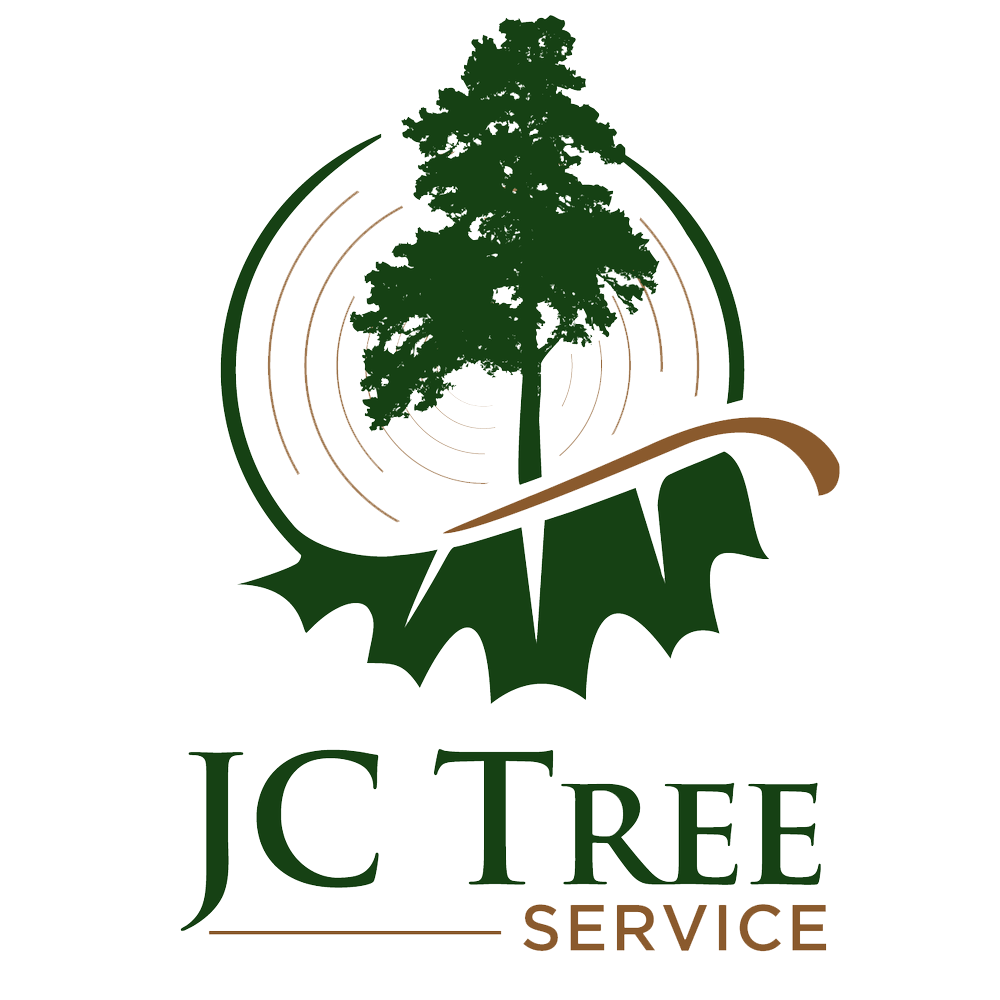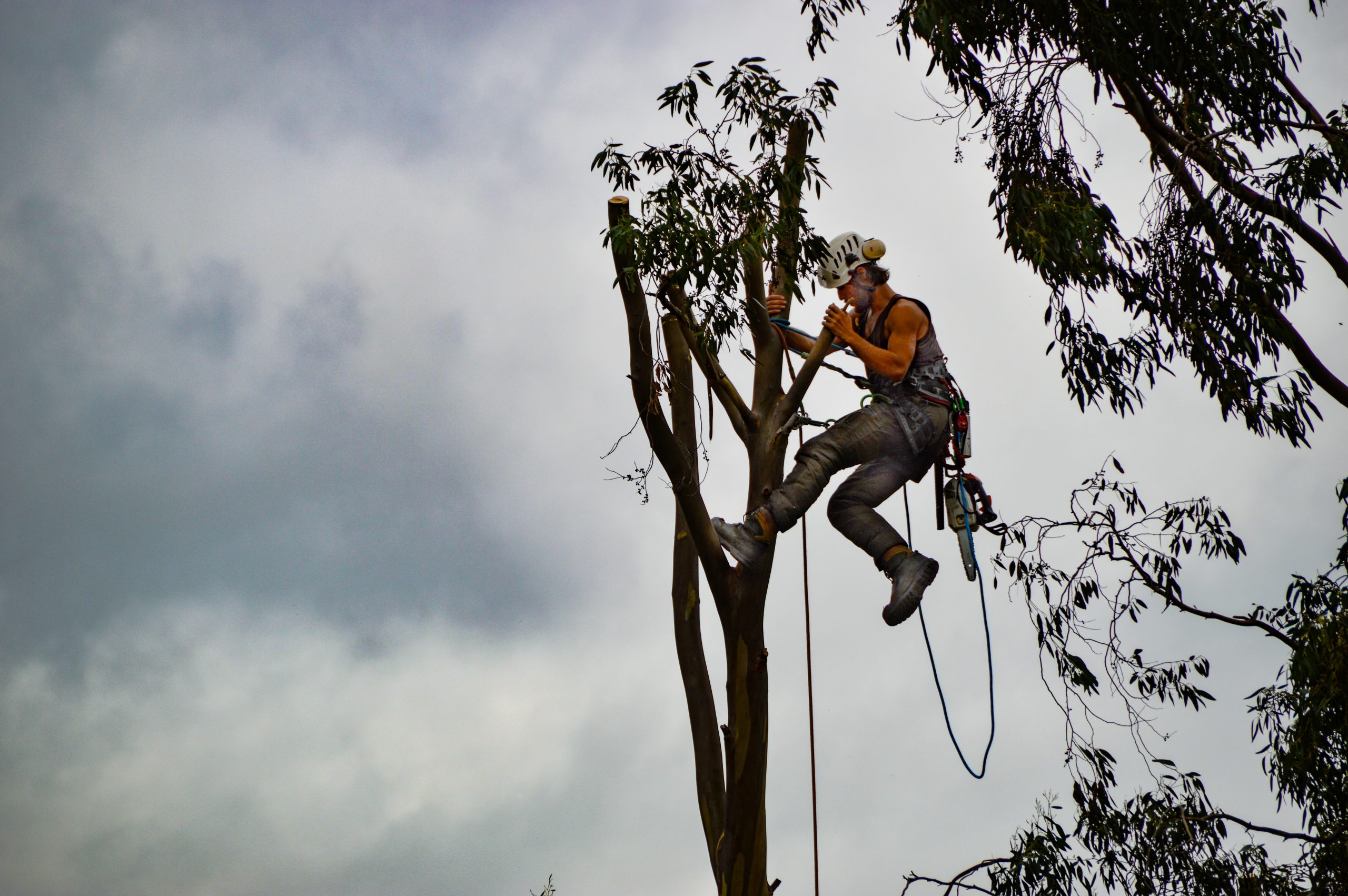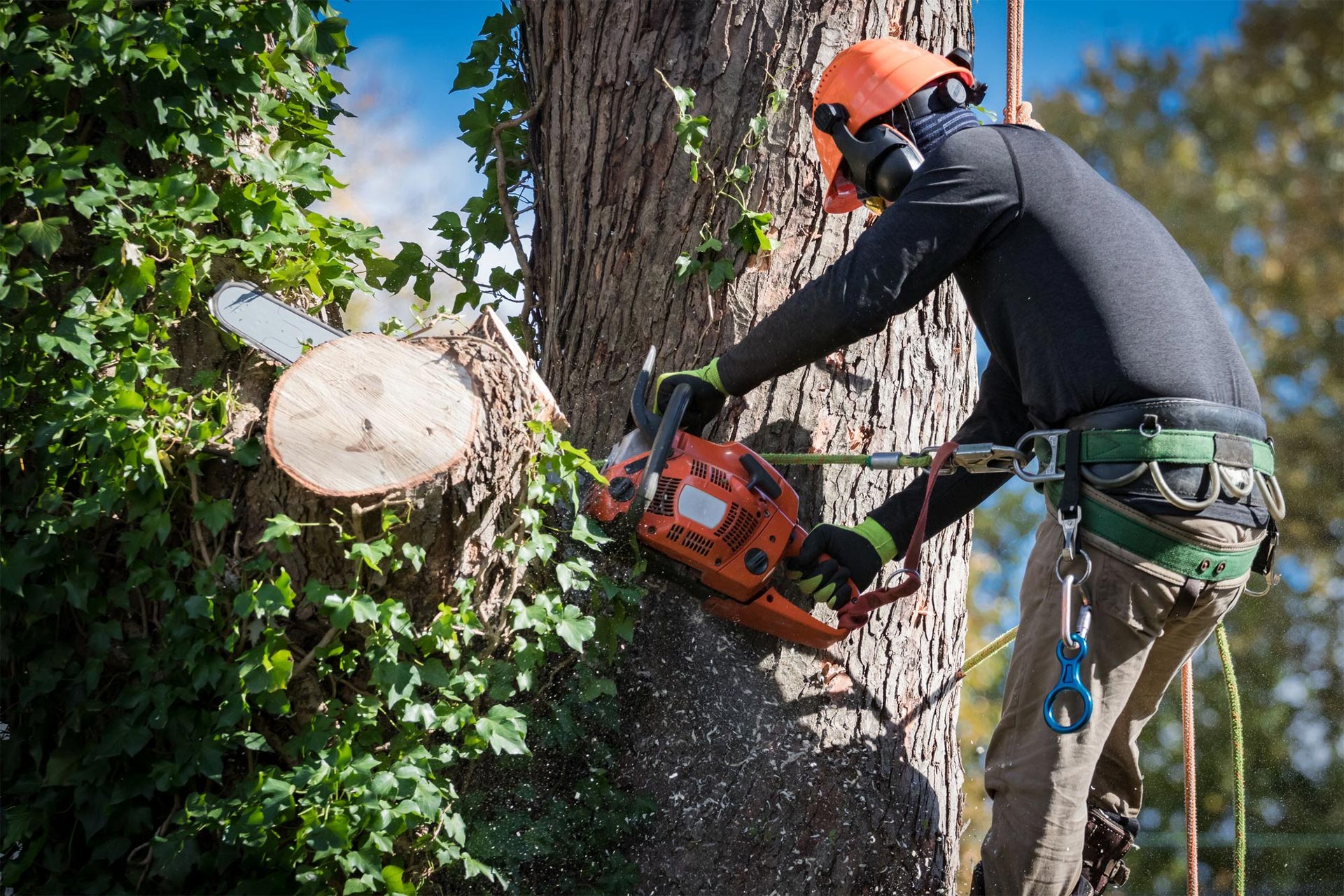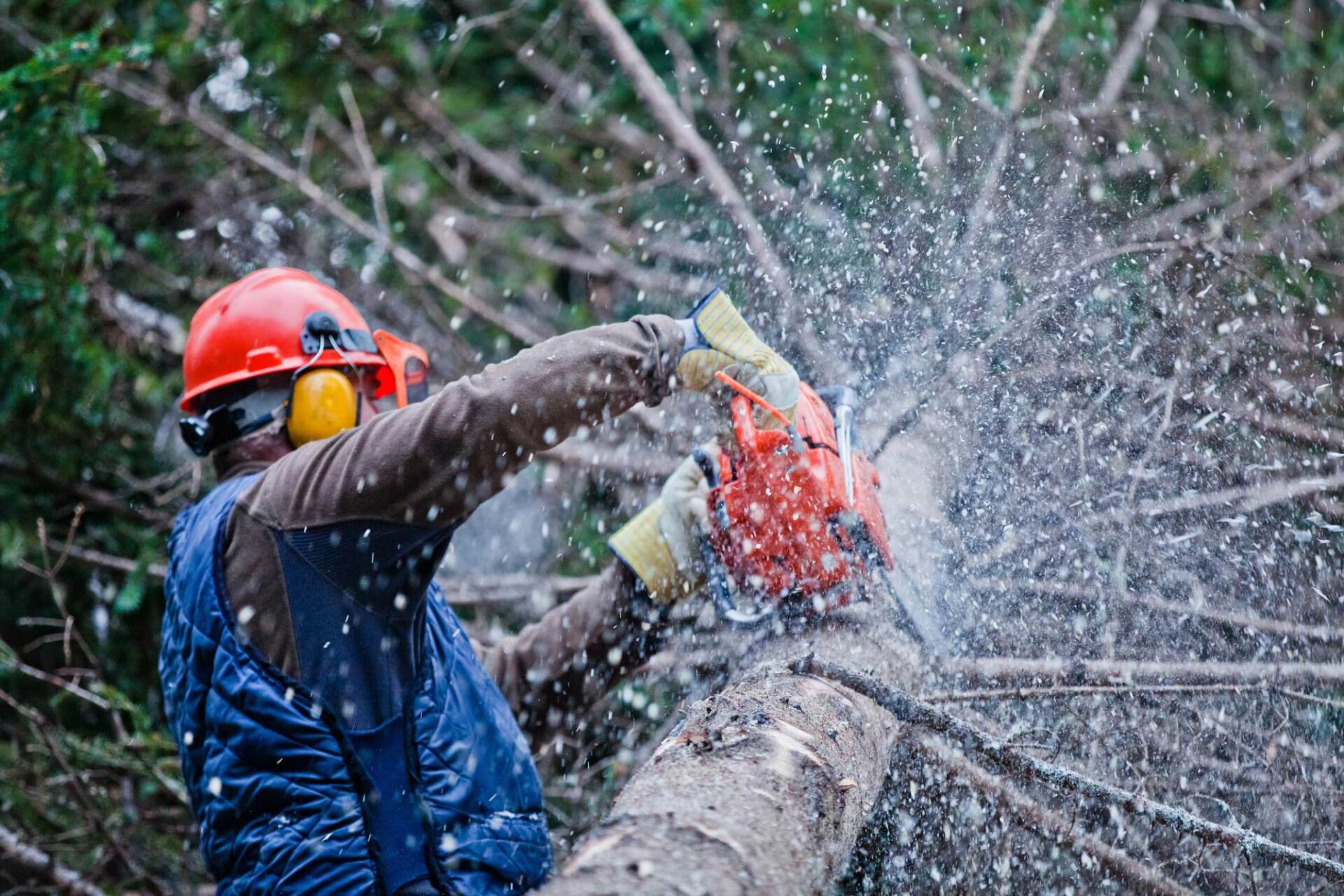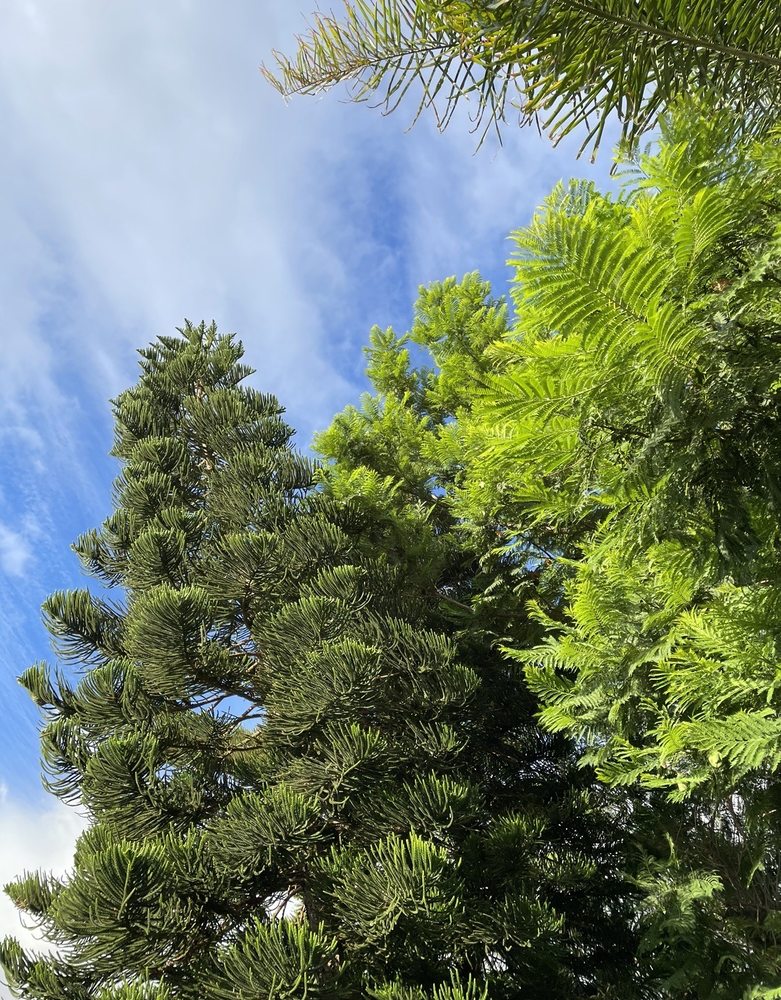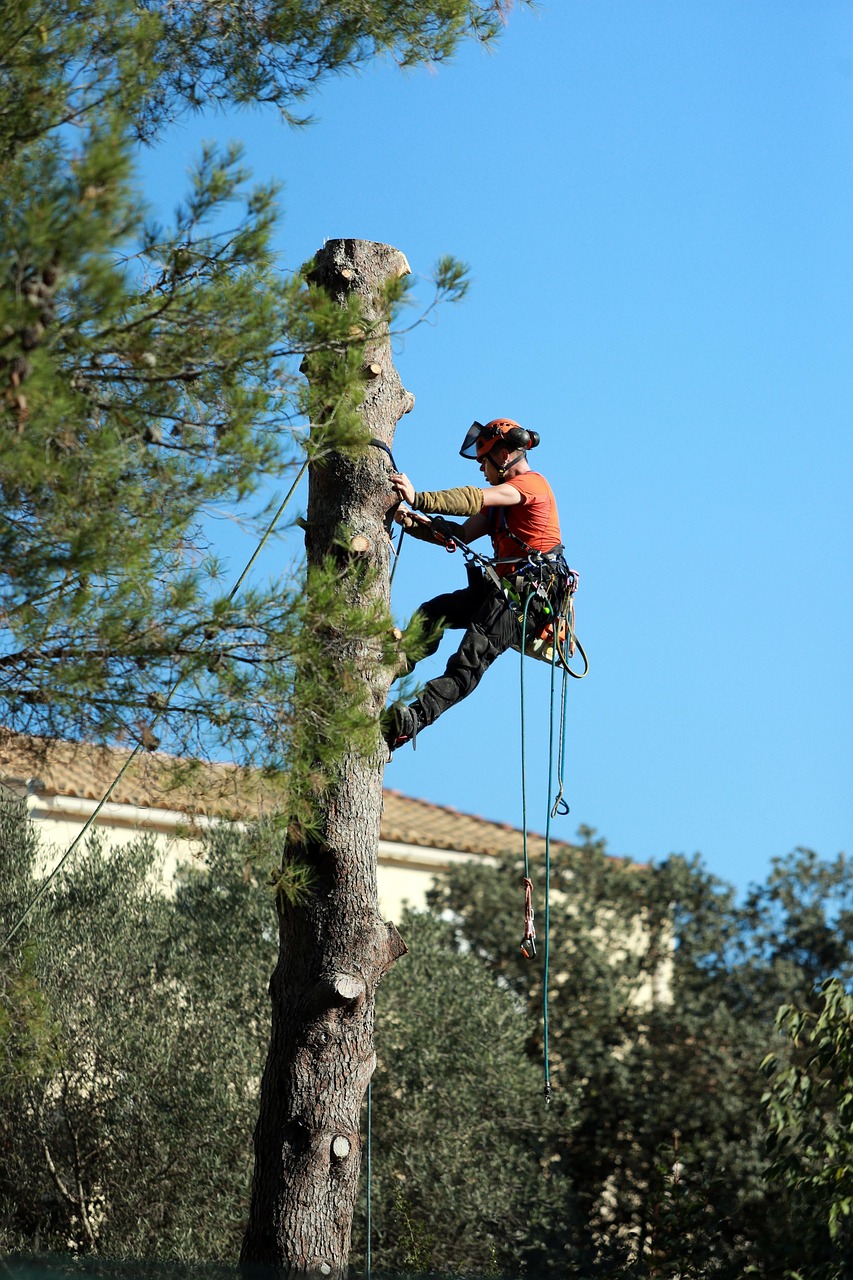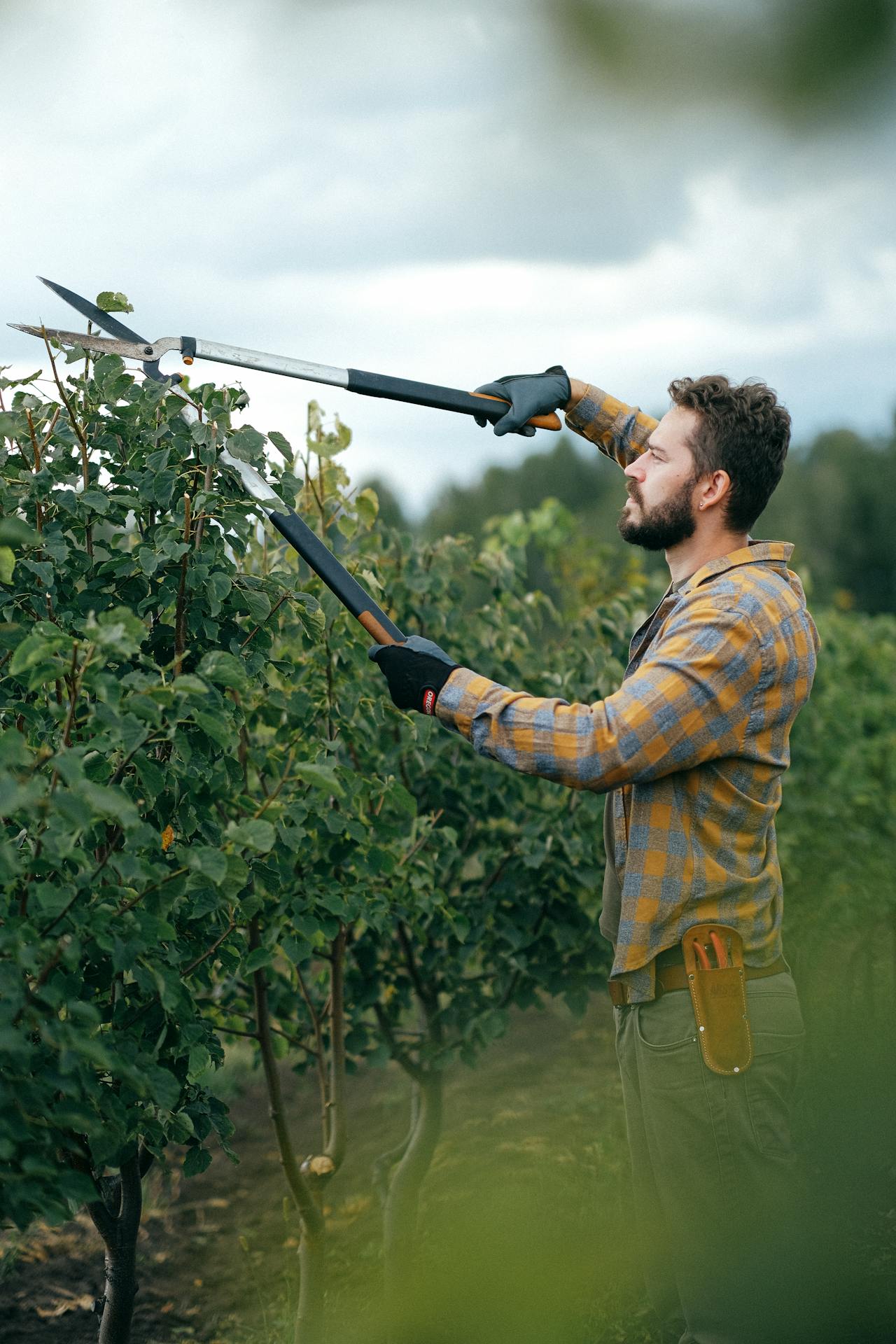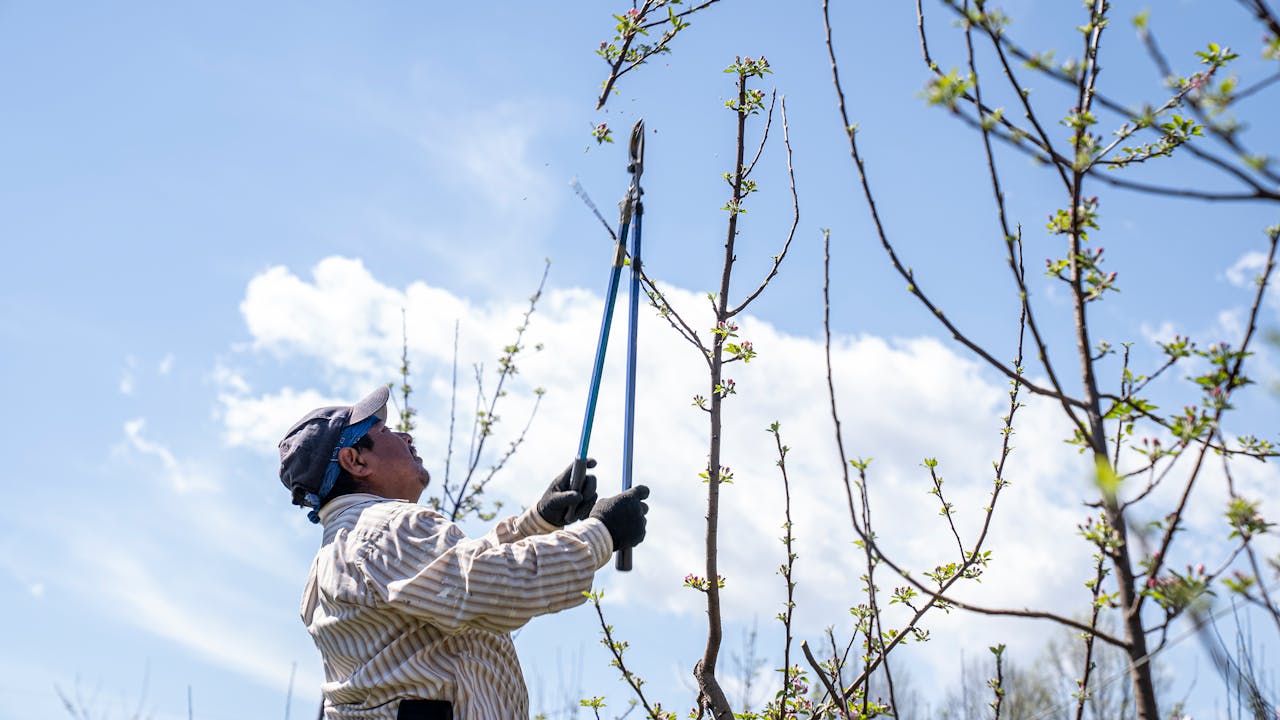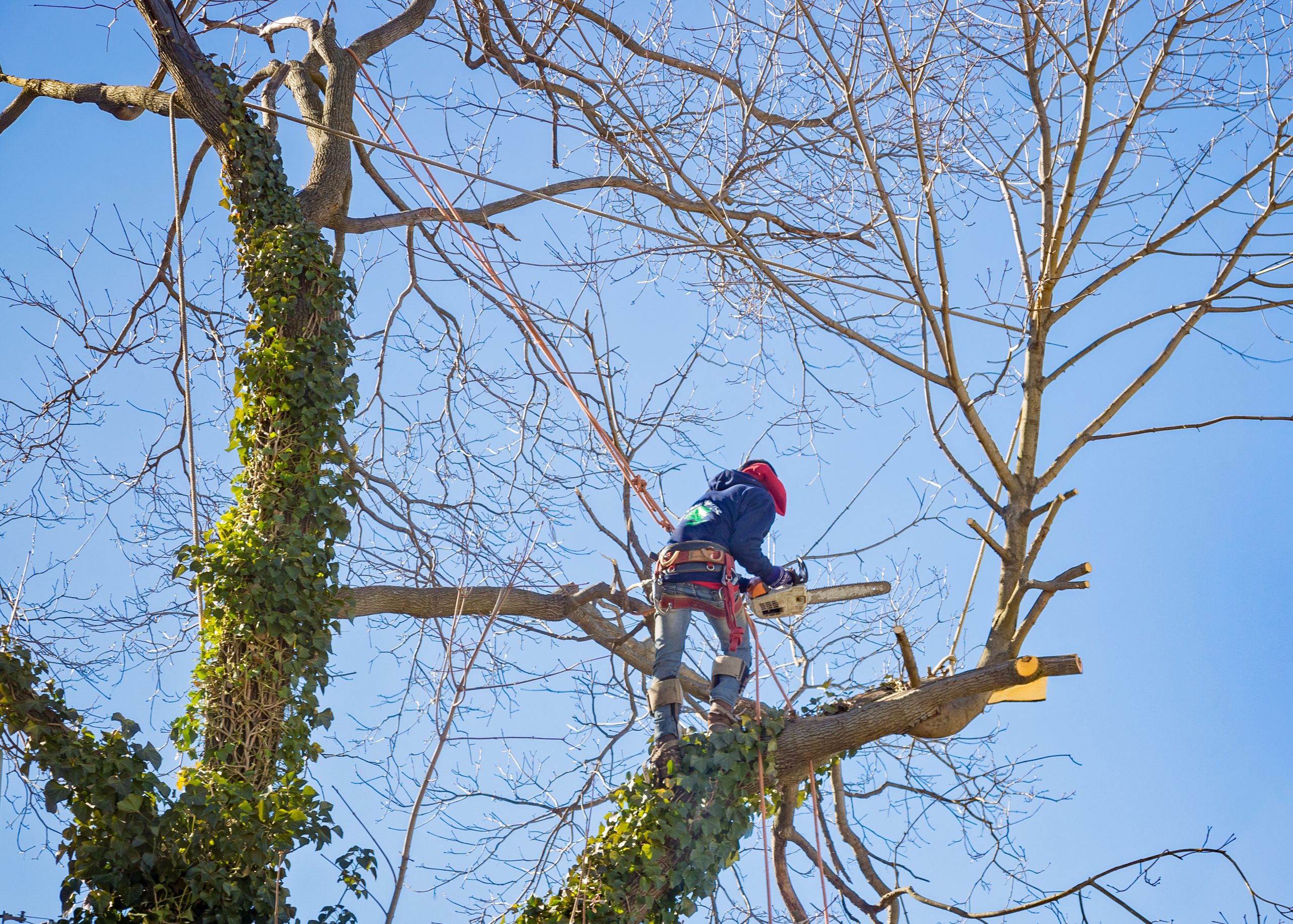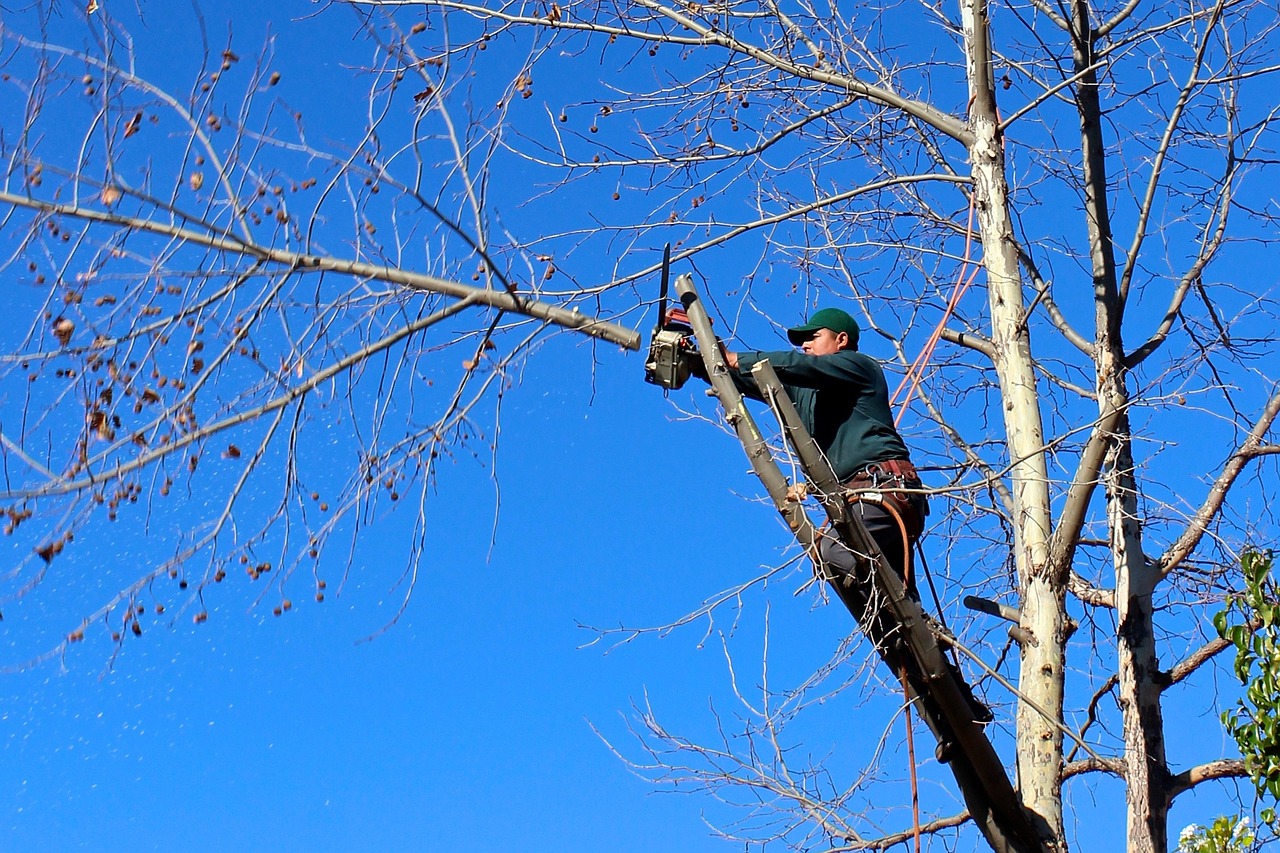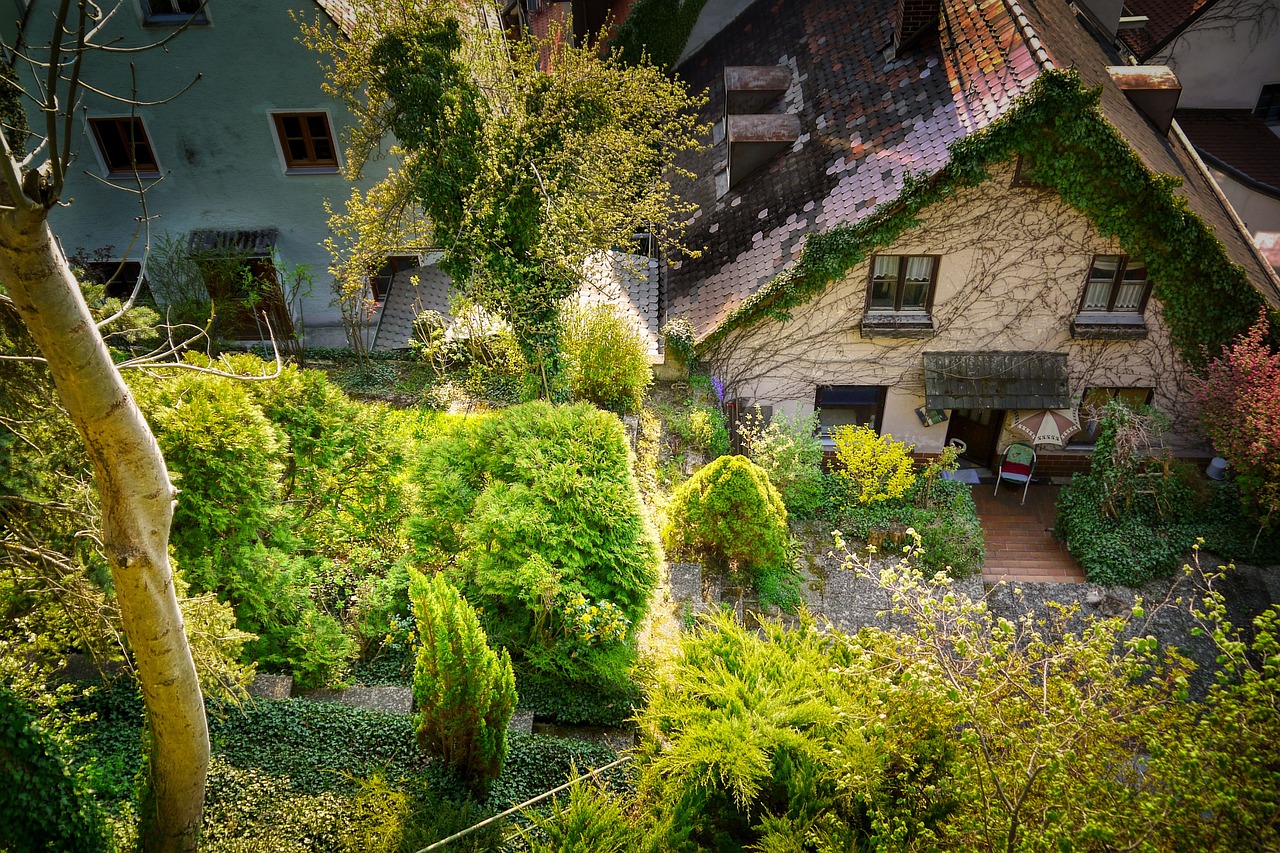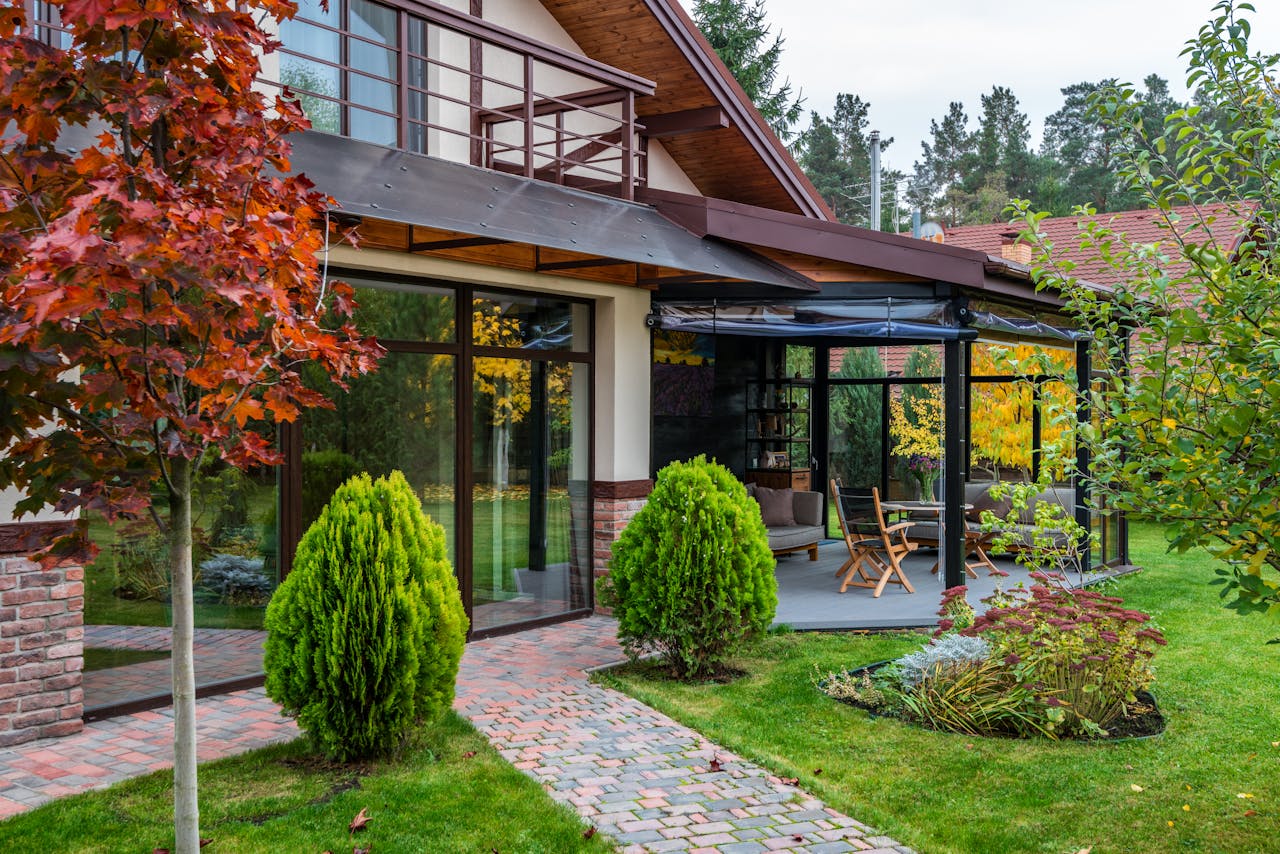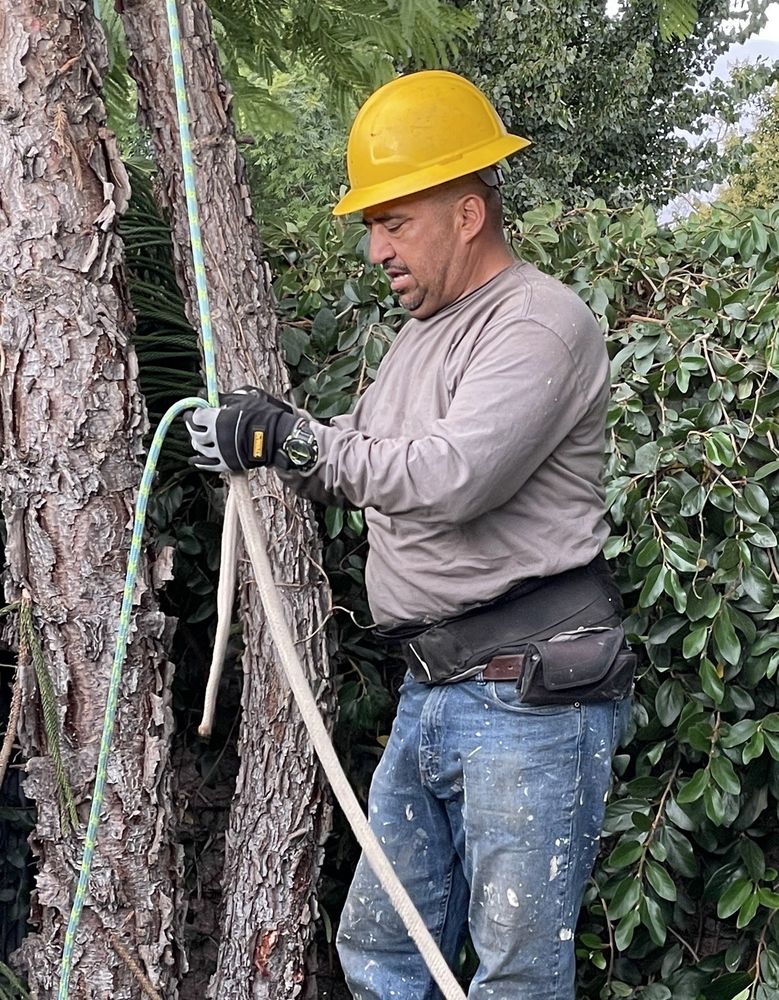Key Takeaways
- Tree topping is an incredibly detrimental practice in which a tree’s foliage—its powerhouse for food production—is removed.
- Sunscald occurs when long strips of inner bark created from topping are exposed to sunlight, weakening and injuring the tree.
- The resulting cuts leave large wounds that can make trees more susceptible to pests, diseases, and decay in the long term.
- The weak regrowth from topping produces unstable branches. These branches are now weak and likely to break, creating severe safety risks to people and property.
- Topped trees incur long-term maintenance problems from the need for frequent corrective pruning and a greatly reduced lifespan, creating even greater expense.
- Inspect for sustainable alternatives to tree topping. Choose the right tree for your location, utilize appropriate pruning techniques, and consult with professional arborists to preserve tree health.
Tree topping is an appealing short-term solution for size control. Here’s why it creates long-term issues, both for the tree and the surrounding communities. Taking off the tops of trees or cutting back the entire canopy may sound innocuous, but in reality, it interrupts the tree’s natural growth cycle.
Topping weakens the tree because it leaves huge wounds, and thus, the tree is left susceptible to pests and disease. This technique introduces structural instability, which makes falling branches more likely. In the years following topping, trees often become stunted, rot, and eventually die prematurely.
We, too, have to be vigilant about tree care, and that starts with knowing the risks and harmful impacts of tree topping. That understanding keeps them safe out in the world, too. Instead of tree topping, choose appropriate tree care practices to promote tree health and beauty.
What Is Tree Topping?
Definition Of Tree Topping
Tree topping is the practice of severely cutting back the uppermost branches of a tree. This practice usually results in a tree with a flat, unnatural-looking crown. Topping a tree to control its size or shape might seem like an easy solution.
This approach cuts off most of the tree’s canopy, the area where leaves perform photosynthesis. Without sufficient leaves, the tree can’t generate the energy necessary for it to thrive, starving the tree of essential nutrients.
In addition to its structural vulnerability, another consequence of topping is sunscald damage. When the trees are topped and the upper branches removed, the inner bark is left immediately exposed to the sun’s rays. When a tree is topped, it can warp the bark, cracking or killing it and exposing the tree to greater damage.
Topping invites pests and disease into the tree. These drastic cuts leave massive wounds that simply cannot heal. This invites insects and fungi to invade, gradually weakening the tree over time.
Structural integrity is yet a third concern. Topping results in poor branch attachments when new growth emerges from the stubs. These branches, at times, are poorly attached and at risk of breaking themselves, creating a higher probability of falling limbs.
Topped trees require significantly more maintenance over time. The fast, brittle regrowth usually needs to be pruned down multiple times, so topping is a dangerous, expensive, and futile alternative.
Common Reasons For Topping Trees
Still others top trees to reduce their height. They typically do this when they want utility clearance or when they believe the tree is too large for their space, rather than helping, topping leaves open wounds, exposing the tree to disease and decay.
This weak regrowth is more prone to breaking, a danger to people and property nearby. Additionally, trees that are topped usually have a much shorter lifespan and must be removed before their natural time.
Even more tragically, topped trees can never regain full health after being so severely mutilated, leaving them irreparably damaged.
Misconceptions About Tree Topping
Another myth is that topping encourages new, healthier growth or prevents dangerous branch failure. In practice, topping shocks the tree, creating an open wound and a stressed tree that can’t fully recover.
It quickly throws the tree’s natural growth patterns into disarray, resulting in an unsightly, unhealthy, and unnatural look. Topping is the indiscriminate removal of most of a tree’s foliage.
Without good leaf cover, the tree can’t generate energy through photosynthesis, putting its entire arboreal well-being at risk.
How Tree Topping Harms Trees
Here’s how tree topping, which entails cutting large branches to stubs, severely damages trees. Many mistakenly believe topping is a simple solution for trees that have grown too large. However, the long-term damage caused by topping far exceeds any short-term gains.
Causes Nutrient Starvation
When a tree is topped, a large percentage of its leaf surface is taken away. Leaves, too, are critical—their green surface is where photosynthesis, the process by which trees generate energy, begins. Without sufficient leaves, the tree can’t produce the nutrients it requires to live.
In the long run, this can greatly weaken the tree, stressing it further and leaving it vulnerable to mortality. If you decide to nurture a topped tree back to health, your goal will be to help it grow new, strong branches. Begin by addressing their basic needs, such as a good dose of nutrients through a balanced fertilizer and regular watering.
Keep a lookout for any evidence of pests or diseases and handle these problems immediately to prevent additional harm. A certified arborist can help point you in the right direction to restore your tree’s health safely and effectively.
Leads To Sunscald Damage
When big branches like this are removed, the resulting exposure to direct sunlight can lead to sunscald. During the day, the bark cooks. If f at night, the tree loses that heat too quickly, which can lead to cracks, causing dead tissue on the tree.
Eventually, this injury serves as an entry point for pests and disease, which further weakens the tree.
Increases Pest And Disease Risks
Topping exposes trees to decay. Topping creates large wounds that will never heal properly. These cuts are open invitations for pests and pathogens, compounding the damage and weakening the tree even more.
Beetles, borers, and fungi quickly exploit these wounds, creating decay that radiates out over the years.
Creates Weak Branch Connections
New branches that grow after topping tend to be weakly attached. These branches can grow with a rapidity unmatched by their naturally grown counterparts but without the structural integrity to match.
Eventually, these trees can become more prone to breaking in storms or under snow loads, which can create safety hazards to both people and property.
Results In Long-Term Maintenance Problems
In the end, topped trees cost more to maintain. This week’s regrowth requires more frequent and aggressive pruning to keep the safety hazards in check.
The tree’s overall longevity will be reduced, resulting in a future removal and replacement.
Sustainable Alternatives To Tree Topping
- Prevent size issues by selecting the appropriate tree species for the available space.
- We recommend using proper pruning techniques that support healthy growth without making drastic cuts.
- Educate the public on proper tree care to prevent trees from getting too large.
- Contact an accredited arborist for professional tree care services and advice on how to best protect trees.
Risks Associated With Topping Trees
Increased Risk Of Tree Decay
Topping destroys the natural shape of a tree by cutting large sections of its crown, exposing the inner tissue of branches. When these cuts are made, they create open wounds that are then hard to heal in the right way. This can cause decay to begin to form at the cut location, which, over time, infects the rest of the tree.
A once-great-topped oak can begin to rot in its trunk or major limbs. This decay compromises the tree’s structural integrity in the long run. Once a tree’s natural defense mechanisms are compromised, it becomes susceptible to pests and diseases that greatly speed up the decaying process.
Higher Likelihood Of Falling Branches
Once a tree is topped, the branches that do grow back are typically poorly attached to the parent branches. These new shoots—known as water sprouts—grow quickly but don’t have the same structure as limbs that developed naturally.
In the long run, this weakens the tree and makes it more prone to dropping branches, particularly in storms or during high wind events. Under the weight of such a canopy, a maple might grow a dozen rank, spindly, dangerous branches.
These limbs are an extreme risk to homes, cars, and pedestrians below. This risk escalates as the tree ages, the tree growing without appropriate support from its initial design.
Reduced Lifespan Of Trees
When you prune many of a tree’s leaves, you remove its top food production source. Leaves, of course, are essential to the photosynthesis process.
Now, with a depleted energy store, the tree can no longer support itself and thus begins the cycle of stress and decline. A healthy pine tree, for example, could live 20 years longer, free from the lethal consequences of topping.
Negative Impact On Tree Growth Recovery
In effect, topping wrecks a tree’s normal growth pattern, putting it in an aggressive survival mode. It reacts by sending out a profusion of weak, fast-growing shoots, and the result is the awkward, crowded, unnatural look popularized by the practice.
These shoots fight with one another for resources, complicating the already challenging task of the tree to put down a stable structure. A topped elm usually sprouts back with little regard for symmetry or balance.
It produces dense thickets of water shoots or suckers that can ruin its eventual recovery and form.
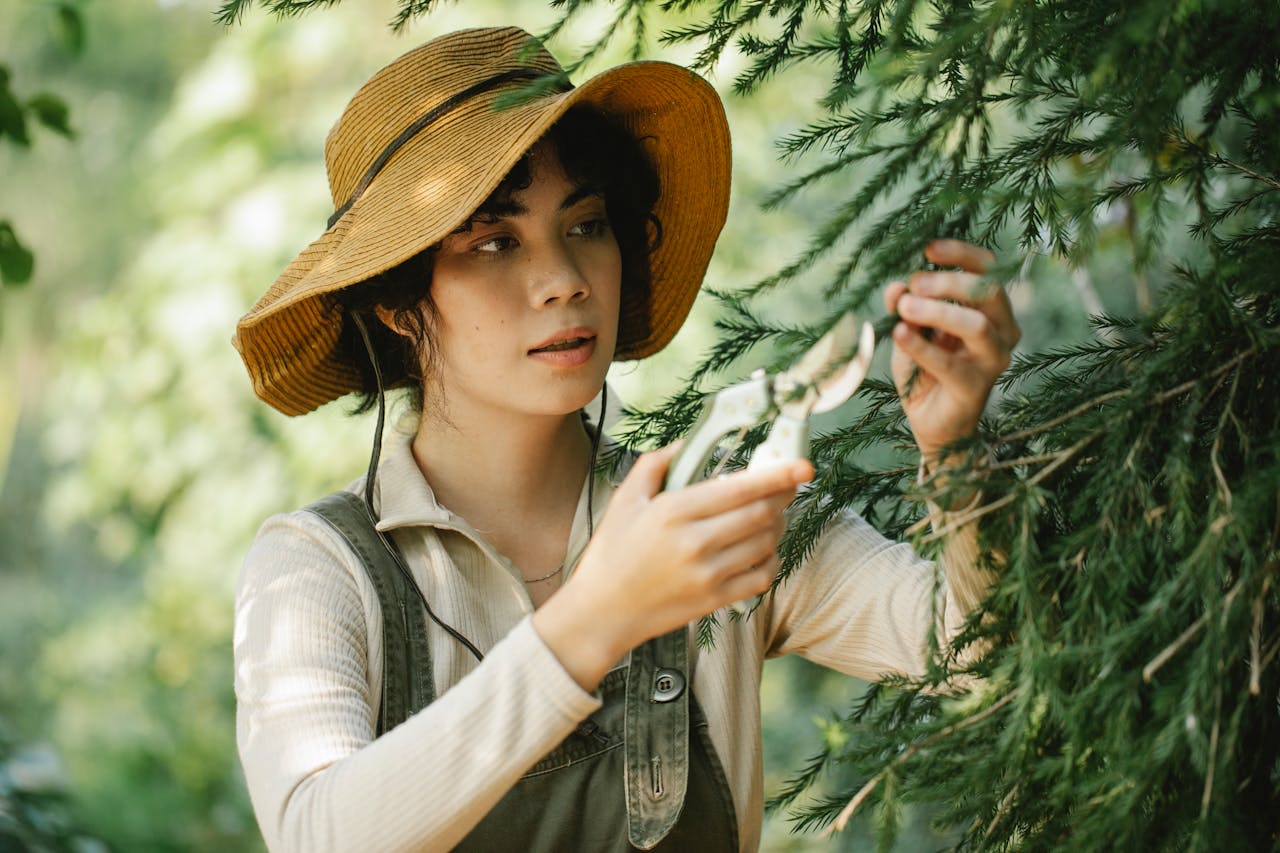
Effects Of Tree Topping On Tree Health
Stress And Shock To The Tree
Topping a tree usually means cutting off 50% or more of the crown. Often, this removes 50 to 100 percent of the tree’s leaf-bearing branches. This abrupt loss of photosynthetic capacity stresses the tree since leaves are its main form of energy production via photosynthesis.
Without them, the tree cannot heal. During the day, the exposed cuts absorb heat. At night, they cool down rapidly, resulting in cracking and lesions in the bark. These horrific injuries seriously compromise the tree’s vascular system, impairing its ability to move water and nutrients.
Topping stresses trees, leaving them susceptible to pests and diseases. Diseases like Dutch elm disease and oak wilt can spread from infected trees, putting other nearby trees at risk.
Disruption Of Natural Growth Patterns
When a tree is topped, its natural growth patterns are violently disturbed. Trees are genetically programmed to develop in certain shapes, but when topped, those trees must quickly create new sprouts.
These shoots—commonly referred to as water sprouts—can grow up to 20 feet per year. This rapid growth is weak and poorly attached, making it more prone to breakage in storms. Eventually, the tree can look mangled or misshapen.
This is even more true in temperate climates, where it can take years for new tree branches and foliage to spread.
Limited Ability To Produce Energy
If a tree loses all its leaves, it can’t photosynthesize very well. With a topping cut, that tree may be leafless for six months or more of the year.
This loss of foliar area means that it cannot generate the energy it needs to survive. This energy deficit can greatly affect its overall health and longevity.
Because topping necessitates a maintenance cycle — with new growth needing regular pruning — this causes even more stress to the tree.
Sustainable Alternatives To Tree Topping
Choose The Right Tree For The Space
Selecting the appropriate tree for your landscape is simple and will keep you from falling victim to dangerous practices such as tree topping. Choose wisely to create a more livable world! When trees outgrow their surroundings, they can cause space conflicts.
This frequently leads to limbs encroaching on electric lines and adjacent buildings. By selecting a tree that fits the size and conditions of the planting space, you avoid these problems. Ornamental medium-sized species, such as dogwoods and crabapples, thrive in smaller areas.
On the other hand, mature trees—like these oaks—do best in open spaces. With appropriate planning, the tree can be allowed to grow in its natural form without the need to make extreme cuts in the future.
Use Proper Pruning Techniques
Pruning is a much healthier alternative to controlling tree growth and shape. Techniques like crown reduction focus on selectively removing branches to reduce height or spread while preserving the tree’s natural form.
Unlike with topping, this approach does not traumatize the tree or expose it to decay and disease. Pruning in late winter or early spring, while the tree is dormant, reduces the likelihood of damage and helps the tree regrow as quickly and healthily as possible.
Pruning to thin out a tree’s canopy improves airflow and sunlight penetration within the tree. This is beneficial not only for the tree itself but for the surrounding plants as well.
Promote Regular Tree Maintenance
Constant maintenance keeps trees healthy and prevents the need for excessive pruning. Removing small, weak branches at an early stage stops them from growing into larger, potential dangers.
Regular monitoring for pests, diseases, or structural issues ensures that any developing problems are handled before they become emergencies. A tree routinely cared for is much less likely to experience the kind of excessive growth that would necessitate a topping.
Seek Professional Tree Care Services
So, when in doubt, the best course of action is to consult a highly qualified arborist. Expert arborists evaluate a tree’s health, looking for signs of decay or disease.
Instead, they advocate for better solutions, like crown reduction, to control growth and remediate structural issues. Their expertise will guarantee the tree’s health and longevity are prioritized without the need to cause irreversible harm through destructive practices.
Restoring Health To A Topped Tree
Steps To Encourage Healthy Regrowth
Once a tree has been topped, regrowth is as quick as it is taxing. Some species are capable of producing new shoots up to 20 feet in a single year. These shoots, called “water sprouts,” are poorly attached. Their fragility leaves them vulnerable to breakage, thus raising potential hazards.
At this point, careful regular pruning becomes critical to form these shoots into a more stable, desirable form. Depending on the extent of the topping, this process may have to be repeated every few years to encourage new growth and avoid additional stress. Being uniform with the pruning will keep the tree from developing long-term structural problems and allow the tree to return to its original shape over time.
Monitor And Address Pest Or Disease Issues
The practice is harmful because topping cuts create large wounds that compromise the tree’s natural defenses against invasive pests and pathogens. Open cuts and exposed wood are the perfect entry point for insects and pathogens.
For example, bark beetles and fungal infections flourish in these conditions, which can kill trees in a matter of days and cause permanent damage. Routine inspections will help identify early signs of infestation or decay. Don’t wait for the tree to heal to identify issues and act quickly.
In many cases, you can use treatments or prune out infected sections to save the tree’s health. Keep the area around your tree clear of debris, including broken branches and leaves. This easy step goes a long way in minimizing the chances of attracting dangerous pests.
Provide Proper Nutrients And Watering
The topped tree is under tremendous stress, as the vascular system is unable to sufficiently support new growth and repair damaged tissue. Providing adequate nutrients by adding soil amendments or using balanced fertilizers will aid in rebuilding the tree’s vitality.
Providing proper watering, particularly through dry spells, serves the tree’s recovery by accelerating root establishment and general health and vigor. Applying a 2- to 4-inch layer of mulch around the base will help retain moisture, keep soil temperature even, and contribute beneficial organic matter.
Don’t overwate since this can create root rot and make the recovery process more difficult.
Consult An Arborist For Expert Guidance
An arborist’s expertise is indispensable if you’re faced with a topped tree. They can determine the depth of damage and suggest solutions based on the species and health of the tree.
Rather than recommending a top, they might recommend a crown reduction or other targeted pruning techniques to achieve the same clearances while keeping the tree healthy and aesthetically pleasing. Seeking professional advice helps to make sure recovery is done safely and effectively, particularly with larger or more severely damaged trees.
With their assistance, you can develop a long-term care strategy that reduces hazards and encourages healthy, sustainable development.
Conclusion
Don’t take the risk of tree topping. It exposes and weakens their structure, invites pests and diseases, and creates long-term health problems. Rather than mitigating issues, it usually results in increased maintenance expenditures and decreased tree longevity. Healthier alternatives, such as selective pruning or canopy thinning,g are far more effective. Properly maintained trees are healthier, more robust, and more attractive.
Proper tree care provides the greatest environmental and community benefit, and we all share this value. Healthy, well-maintained trees clean the air, offer cooling shade, and increase your property’s value. By making smart care decisions that prioritize long-term sustainability, we can ensure these benefits for generations of people to come.
If your tree has already been topped, don’t worry; it’s not too late to allow it to begin recovering. If you have a topped tree, talk with a certified arborist about how to help it recover and thrive.
Enhance Your Landscape With JC Tree Service’s Expert Tree Maintenance
Proper tree maintenance is essential for keeping your property safe, beautiful, and well cared for. At JC Tree Service, we specialize in comprehensive tree maintenance services for homes and businesses in Brentwood, Antioch, and surrounding areas. Whether you need seasonal pruning, risk assessment, or help managing overgrown branches, our skilled team is here to ensure your trees stay healthy and safe year-round.
Our tree maintenance services are designed to prevent potential hazards, protect your property, and enhance curb appeal. With regular maintenance, we help you avoid risks from weak or damaged branches, manage tree growth, and support long-term health for a vibrant landscape. JC Tree Service focuses on eco-friendly practices, delivering solutions tailored to your needs while keeping your landscape organized and manageable.
Don’t let neglected trees jeopardize your property’s safety and beauty. Contact JC Tree Service today for a free, no-obligation quote on our professional tree maintenance services. Discover how expert care can transform your outdoor space!
Disclaimer
The materials available on this website are for informational and entertainment purposes only and not to provide legal or professional advice. You should contact your attorney or home improvement specialist to obtain advice concerning any particular issue or problem. You should not act or refrain from acting based on any content included in this site without seeking legal or other professional advice. The information presented on this website may not reflect the most current home improvement developments. No action should be taken in reliance on the information on this website. We disclaim all liability concerning actions taken or not taken based on any or all of the contents of this site to the fullest extent permitted by law.
